
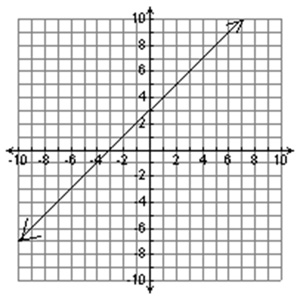
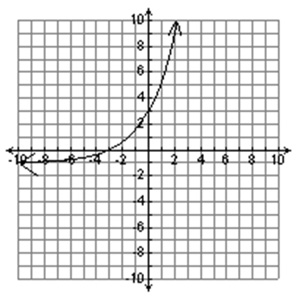
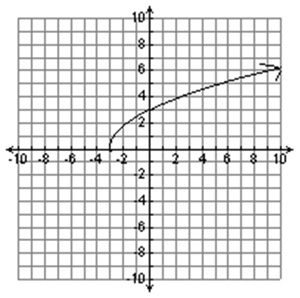
Which statement best describes the graph of a quadratic equation that has a vertex of (3, 1) and a y-intercept of (-4, 0)?
A. The parabola is facing up and has an axis of symmetry of x = 1.
Incorrect. The y-intercept is below the vertex and the axis of symmetry goes through the vertex.
B. The parabola is facing down and has an axis of symmetry of x = 3.
Correct! The vertex is above the y-intercept so the parabola faces down.
C. The parabola is facing up and has an axis of symmetry of y = 1.
Incorrect. The y-intercept is below the vertex and the axis of symmetry is a vertical line.
D. The parabola is facing down and has an axis of symmetry of x = 1.
Incorrect. The axis of symmetry goes through the vertex.
Which of the following graphs represents a quadratic function with a vertex of (-3, 0) and a y-intercept of (0, 4)?
| A. |  |
| B. |  |
| C. |  |
| D. |  |
A
Correct! Another point on the graph is (-6,4).
B
Incorrect. This is a linear function.
C
Incorrect. This is an exponential function.
D
Incorrect. This is a square root function.
The graph of a quadratic function is given below.
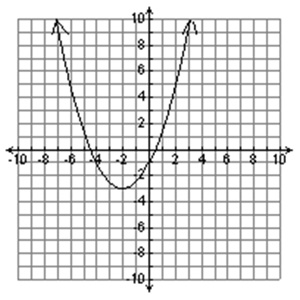
Which of the following is true about the graph?
A. The value of the y-intercept is less than the minimum value of this quadratic function.
Incorrect. The y-coordinate of the vertex determines the minimum or maximum value of the quadratic function.
B. There is only one x-intercept for this quadratic function.
Incorrect. The x-intercept is where the graph crosses the x-axis.
C. There is no minimum value for this quadratic function.
Incorrect. When the parabola faces up, the minimum value is the value of the y-coordinate of the vertex.
D. The sum of the x-intercepts is less than 0.
Correct! The sum is -4.
The graph of a quadratic function is given below.
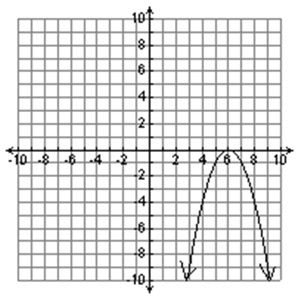
Which of the following is true about the graph?
A. The quadratic function has 1 x-intercept and the maximum value is 6.
Incorrect. The maximum value is the value of the y-coordinate of the vertex.
B. The quadratic function has no x-intercepts and the maximum value for this function is 0.
Incorrect. The x-intercept is where the graph crosses the x-axis.
C. The quadratic function has 1 x-intercept and the maximum value for this function is 0.
Correct! You interpreted the vertex point correctly.
D. This quadratic function has no y-intercept.
Incorrect. All parabolas that are functions have a y-intercept.
The graph of a quadratic function is given below.
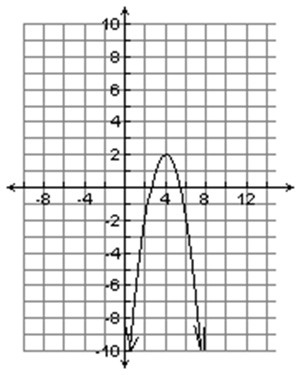
Which of the following represents the axis of symmetry for the graph?
A. y = x
Incorrect. The axis of symmetry goes through the vertex.
B. y = 2
Incorrect. The axis of symmetry divides the parabola in half.
C. x = 4
Correct! The axis of symmetry is a vertical line through the vertex.
D. x = 2
Incorrect. The scale on the graph is 2.